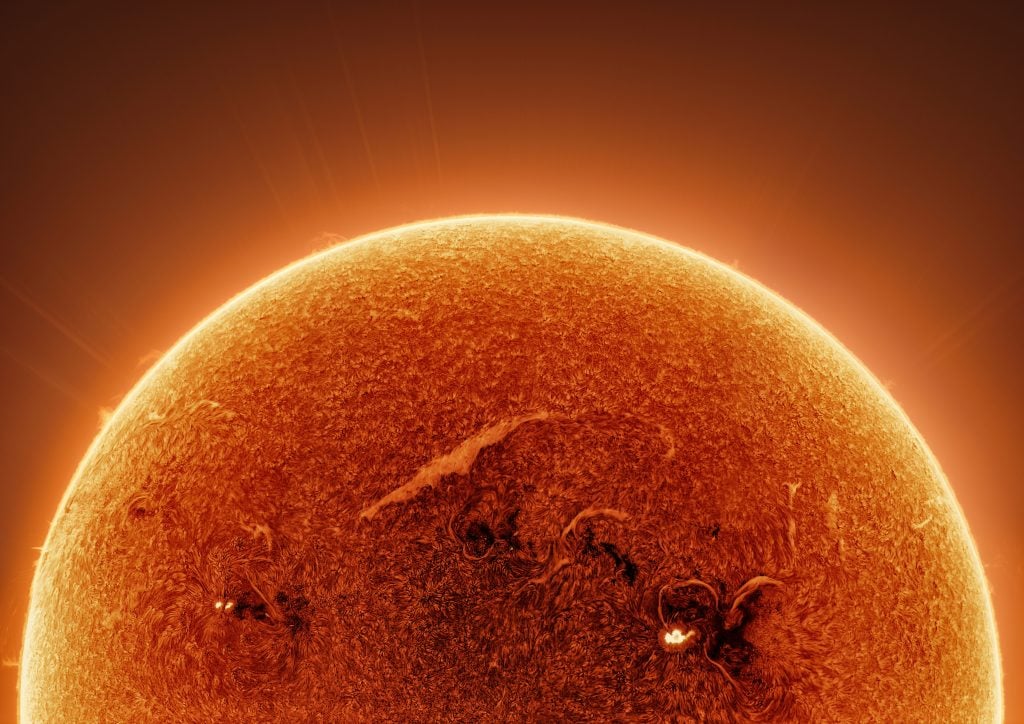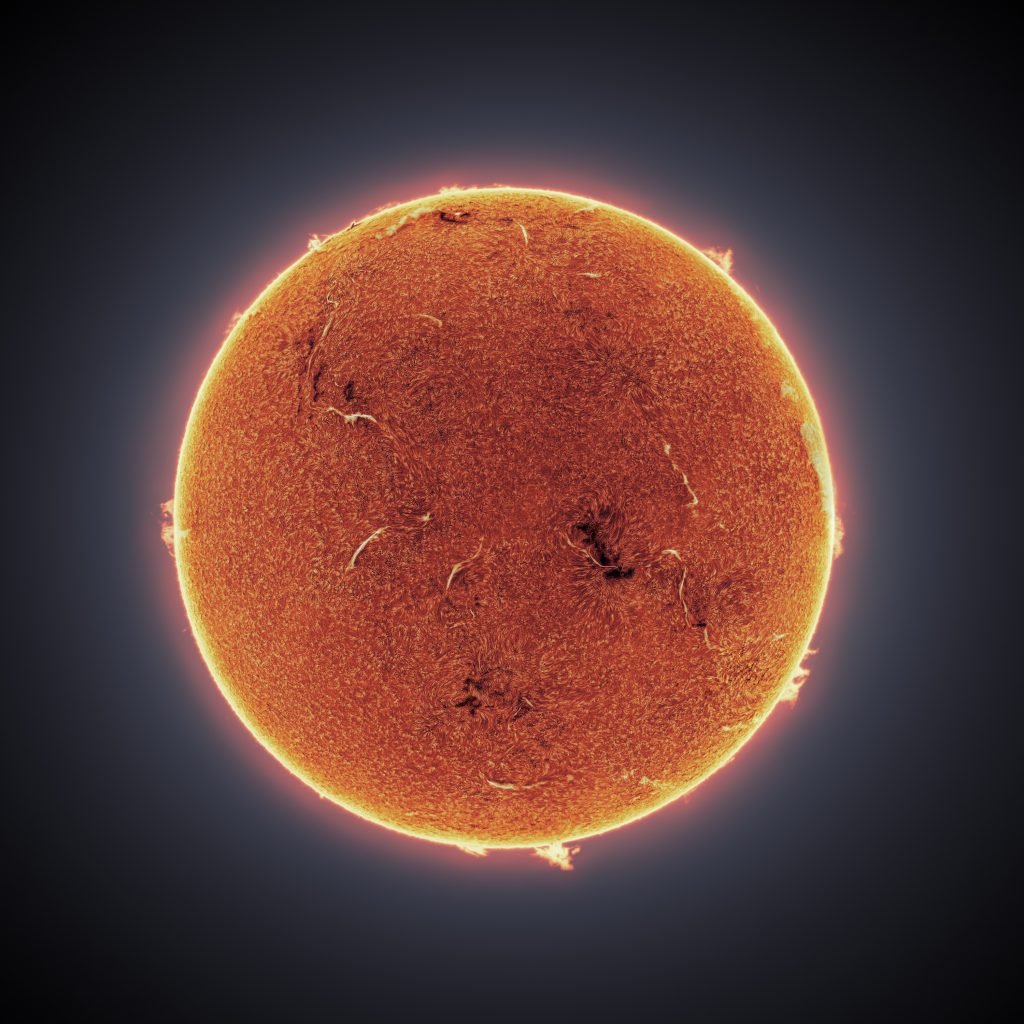Art & Tech
Hot! How a Backyard Photographer Captured Some of the Most Detailed Images of the Sun
Andrew McCarthy's new photos of the sun were captured with a humble five-inch telescope.

Andrew McCarthy's new photos of the sun were captured with a humble five-inch telescope.

Richard Whiddington

For much of the past decade, Andrew McCarthy has been exploring the universe—albeit from his backyard in Arizona.
Using telescopes with specialized filters, planetary cameras, and astro-specific software, he captures the happenings of universe in all their beguiling and beautiful details. McCarthy has photographed the passage of the International Space Station, the crimson glow of nebulae, the glint of asteroids, and the pockmarked face of the moon.
“I impulsively bought a telescope after fondly remembering looking through my father’s telescope as a child,” McCarthy said. “One look at the planets through the eyepiece and I was hooked. I became obsessed with trying to share what I was seeing with the world.”
One subject McCarthy keeps sharing is the sun.
Most recently, McCarthy has been photographing the sun’s chromosphere, the thin layer of plasma between the sun’s surface and its upper atmosphere. The process has involved taking thousands of photographs over a 30-minute period and then compiling them together using specialist computer software in a process known as photostitching.

Closeup of an active region on the sun. Photo: courtesy Andrew McCarthy.
Earlier this year, McCarthy and his collaborator, Jason Guenzel, worked over five days to produce a 140-megapixel image of the sun. According to McCarthy, the image is the result of 90,000 shots layered over one another in a “scientifically plausible way” using NASA’s SOHO data as a reference.
The results turn the surface of the sun into a detailed hellscape that appears composed of innumerate sheaves of fiery wheat. These are in fact jets of plasma that measure thousands of miles long.
In some places, tendrils of orange seem to leap from the sun’s surface. These are phenomena known as prominences, which are clusters of stellar material trapped by the sun’s magnetic field. The prominences can measure the length of many Earths, according to McCarthy’s calculations.
Photographing the star 93 million miles away from Earth requires caution—as McCarthy warns on his website, “solar astronomy is dangerous, and a mistake could leave you blind.” He uses equipment specifically designed to purge the sun’s heat and recommends wearable mylar filters for everyone else.

An image of the sun taken from McCarthy’s backyard. Image: courtesy Andrew McCarthy.
Many assume such stunning images of outer space can only be captured with top-of-the-line technology like NASA’s James Webb Space Telescope. But these images were captured with a five-inch telescope.
After toying with a scope he picked up for free on Craigslist, McCarthy bought his first telescope in 2017 and, through a process of trial and error, has honed his cosmic photography technique. What started as a hobby is now a full-time occupation—McCarthy now uses his website, Cosmic Background, to sell fine art prints, posters, and calendars of his photographs. On his YouTube channel, he offers advice and tips to other amateur astrophotographers.

McCarthy has turned his hobby of photographing space into a full time occupation. Photo: courtesy Andrew McCarthy.
In addition to amassing several hundred thousand followers on social media, McCarthy’s work has received public recognition for his viral image of the moon, which was imaged over the course of year. In an interview with NPR, McCarthy said the pair captured over 200,000 frames to complete the lunar image; the frames were photostitched much like his sun image. The resulting photo was hung from the launch platform of NASA’s Artemis I in 2022.
Beyond the public recognition he has received, McCarthy says the experience of photographing the sun has changed the way he sees the world. “I’m reminded that I’m part of a greater universe, and that life on Earth is extremely precious,” he said. “We are a mote of stardust that became self-aware, and that miracle must be preserved at all costs.”
More Trending Stories:
Revealed: The Major Mystery Consignors of New York’s Multi-Billion-Dollar Fall Auction Season
Christie’s Pulled Two Works by a Prominent Middle Eastern Artist From Sale After a Complaint